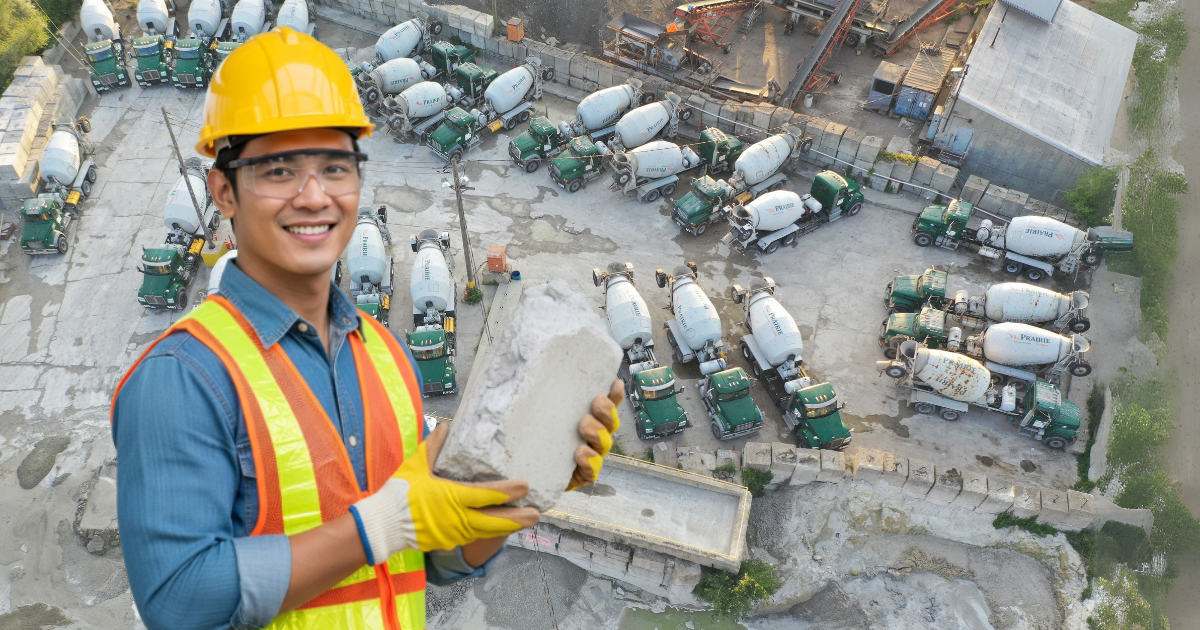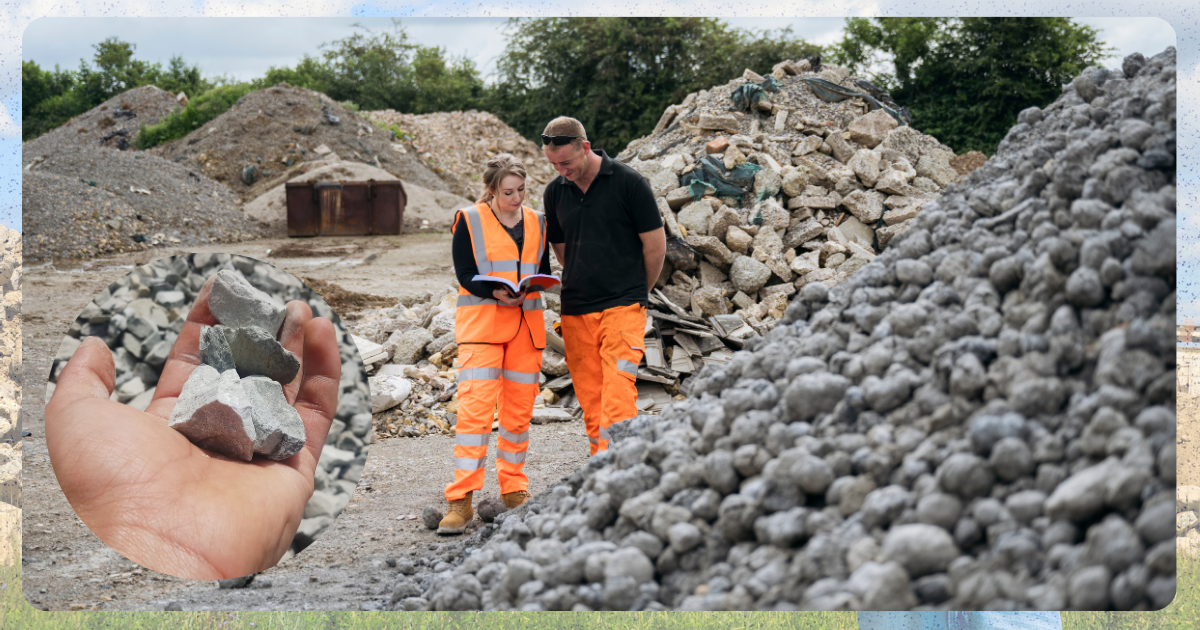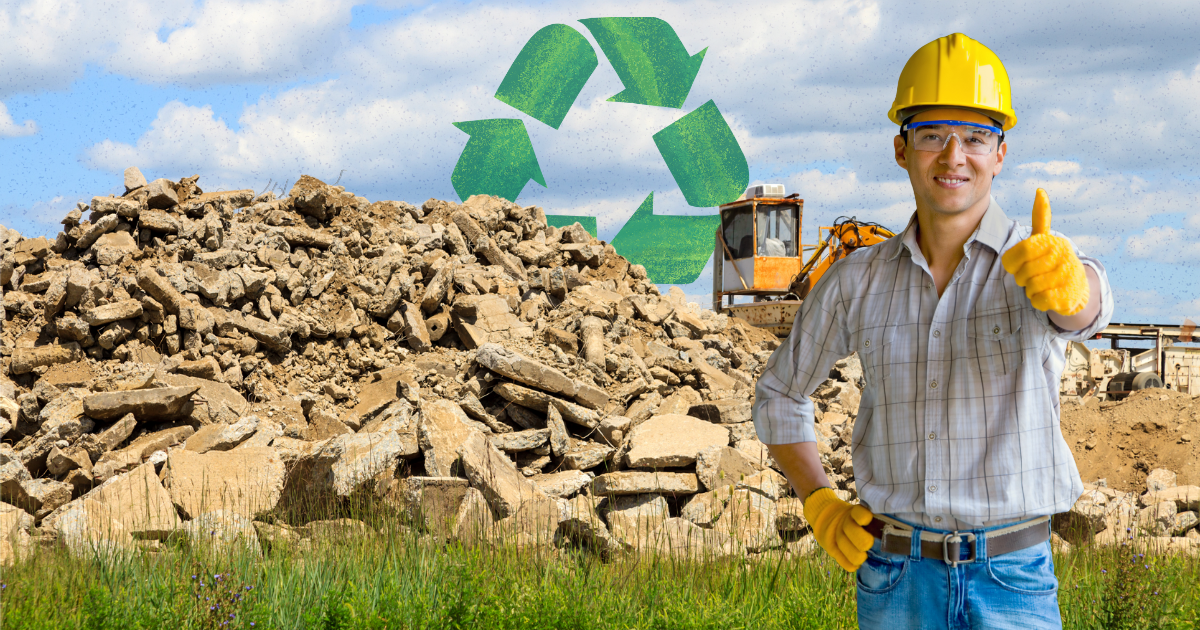Sustainable practices are gaining ground in the Philippines, but the country still lags behind global leaders in implementation. Once considered a mere buzzword, sustainable practices are now evolving into a practical approach. More builders and engineers are choosing eco-friendly options to reduce waste and lower project costs.
One of the most sustainable options in construction today is Recycled Concrete Aggregates, or RCA. While RCA has been around for some time, it has yet to become a standard choice—even as sustainability becomes a growing priority. Concerns about durability and performance still make some builders hesitant. However, RCA offers several potential benefits worth considering.
In this article, we’ll look into both the advantages and limitations of using recycled aggregates, helping you decide if it’s the right fit for your next project.

The Benefits of Using Recycled Aggregates
Recycled aggregates are construction materials made by crushing and reusing old concrete, bricks, or asphalt from demolished structures. Instead of going to landfills, these materials are processed into usable aggregates for new construction projects like road bases, backfills, or even new concrete mixes.
Compared to natural aggregates like gravel or crushed stone, recycled concrete aggregates (RCAs) offer a more sustainable and cost-effective option. Beyond their environmental benefits, they also open up practical opportunities to build efficiently while supporting long-term sustainability goals.
Sustainability and Environmental Impact of RCA
Using RCA helps conserve natural resources and lowers the demand for freshly quarried materials. It also reduces landfill waste by reusing concrete debris from construction and demolition.
In places like Hong Kong, construction waste can make up as much as 38% of total urban waste—a figure that highlights the potential impact of recycling. Meanwhile, Germany has shown how large-scale recycling programs can successfully turn old concrete into usable materials.
While these examples are from outside the Philippines, they show how recycled aggregates can contribute to more sustainable building practices anywhere in the world.
Cost and Efficiency Gains
Recycled aggregates are also significantly better for the budget, just as they are for the environment. Transport and disposal costs are often lower when using materials sourced from nearby demolition sites. Such an approach can lead to major savings on large-scale builds.
Since RCA reduces the need for fresh quarrying, it can cut down on material sourcing time as well. When used properly, it delivers strong sustainability returns without compromising project schedules.
Limitations and Performance Trade-offs
Despite its benefits, RCA requires careful consideration. Understanding its limitations helps ensure structural integrity and long-term performance.
Reduced Strength in Some Applications
Recycled aggregates typically show lower performance in high-load structural elements like columns or heavy pavements. Full replacement is uncommon. Most projects use RCA as a partial substitute to ensure the final product remains within acceptable strength limits.
Variable Quality Based on Source
The effectiveness of RCA depends heavily on its processing and source material. Old mortar attached to recycled particles can affect strength and increase porosity. Previous usage and crushing methods also influence durability and consistency. This variability makes quality control a crucial part of any RCA-based project.
Mix Design Requirements
Projects using RCA must involve a well-designed concrete mix. The goal is to meet the required strength, durability, and lifespan targets. Treated RCA performs more reliably, while untreated materials may result in inconsistent outcomes. Proper batching, testing, and on-site adjustments are often necessary to achieve stable results.
Common Uses of Recycled Aggregates
Recycled aggregates are used in a variety of construction scenarios. In bound mixes (also known as HBM/hydraulically bound mixture) such as concrete, studies show that replacing natural coarse aggregates (NCA) with RCA up to 40% does not significantly compromise concrete strength. This makes RCA a suitable choice for non-structural elements such as pathways, driveways, and concrete blocks.
Unbound applications (any use of aggregate material without cement or binding agents), such as road bases, trench backfills, and pavement sublayers, benefit even more from RCA’s cost-efficiency. These uses typically have lower strength requirements, allowing recycled materials to perform reliably while reducing overall material expenses.

Enhancing Recycled Aggregates for Better Results
Recycled aggregates become much more reliable when they go through extra treatment before being used in concrete. These treatments improve their structure and make them perform better over time.
Some of the most effective methods include soaking the aggregates in special mixtures, removing leftover cement or mortar, and using smart mixing techniques. These steps help reduce issues like cracks or weak spots in the final concrete.
Studies have shown that when recycled aggregates are properly treated, they can work just as well as natural aggregates in many common construction projects. This is especially true for general-purpose concrete where extreme strength isn’t needed.
So, while untreated recycled materials may have limits, investing in better processing can make them a solid choice for a wide range of uses.
Ideal Applications for RCA (Recycled Concrete Aggregates)
Recycled aggregates work best when matched with the right type of project. They offer strong environmental and cost-saving benefits in the right settings. The most ideal scenarios where RCA is best used include:
- Projects with moderate strength requirements
- Projects with a focus on sustainability goals
- Roadworks, pavement sublayers, and backfills
- General-purpose concrete is suitable for applications where high strength isn’t critical
- Teams that have access to treat RCA or the ability to process recycled materials on-site
Even with treatment, heavy-load structural projects such as columns or bridges may not be the most ideal applications for RCA. Untreated RCA is not ideal as a standalone option. Matching the material to the project’s needs ensures that recycled aggregates deliver value, performance, and sustainability in one package.
Smart Sustainability

Using recycled aggregates is a smart way to balance eco-friendly choices with practical building needs. When used in the right parts of a project and prepared properly, they can perform well and help reduce environmental impact.
Contractors and builders who check the quality of recycled materials and use them wisely will do well. As more construction projects aim to go green, recycled aggregates offer a reliable and efficient way to build better.
References
ETM. (n.d.). A Beginner’s Guide to Different Types of Recycled Aggregates. ETM. https://www.recyclingbristol.com/a-beginners-guide-to-different-types-of-recycled-aggregates/
SciELO – Scientific electronic library online. (n.d.). Properties of concrete having treated recycled coarse aggregate and slag. SciELO – Scientific electronic library online. Retrieved August 6, 2025, from https://www.scielo.cl/scielo.php
Tam, V. W. Y., & Tam, C. M. (2006). A review on the viable technology for construction waste recycling. Resources, Conservation and Recycling, 47(3), 209–221. https://doi.org/10.1016/j.resconrec.2005.12.002
Skocek, J., Ouzia, A., Vargas Serrano, E., & Pato, N. (2024). Recycled sand and aggregates for structural concrete: Toward the industrial production of high-quality recycled materials with low water absorption. Sustainability, 16(2), 814. https://doi.org/10.3390/su16020814
Das, B., Prakash, S., Reddy, P. S. R., & Misra, V. N. (2007). An overview of utilization of slag and sludge from steel industries. Resources, Conservation and Recycling, 50(1), 40–57. https://doi.org/10.1016/j.resconrec.2006.05.008
Bajracharya, S., Phuyal, S., Acharya, S. et al. Sustainability assessment of recycled concrete aggregate in the Kathmandu Valley: a comparative analysis with natural coarse aggregate. Discov Civ Eng 2, 78 (2025). https://doi.org/10.1007/s44290-025-00208-w
Panda, B., Imran, N.T., Samal, K. (2021). A Study on Replacement of Coarse Aggregate with Recycled Concrete Aggregate (RCA) in Road Construction. In: Das, B., Barbhuiya, S., Gupta, R., Saha, P. (eds) Recent Developments in Sustainable Infrastructure . Lecture Notes in Civil Engineering, vol 75. Springer, Singapore. https://doi.org/10.1007/978-981-15-4577-1_91










